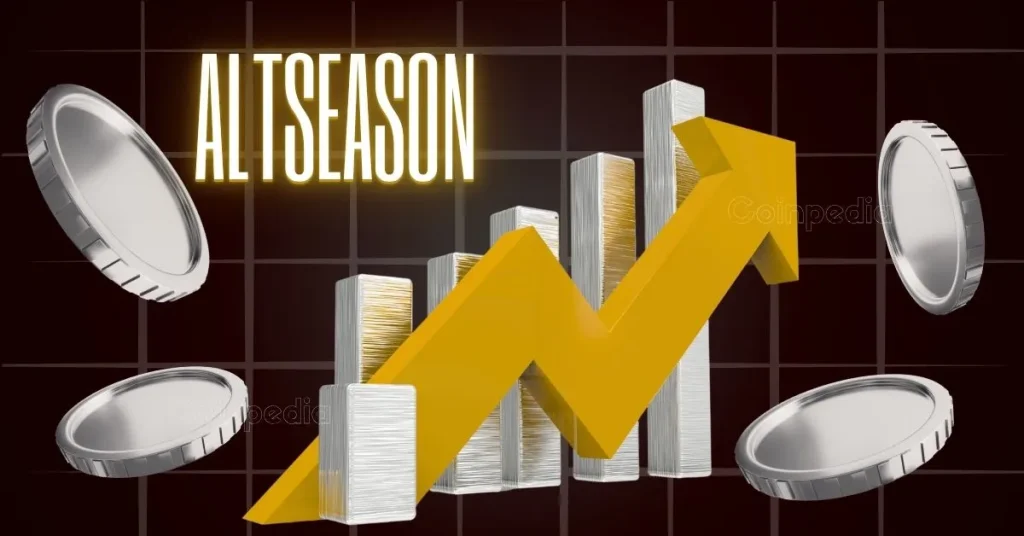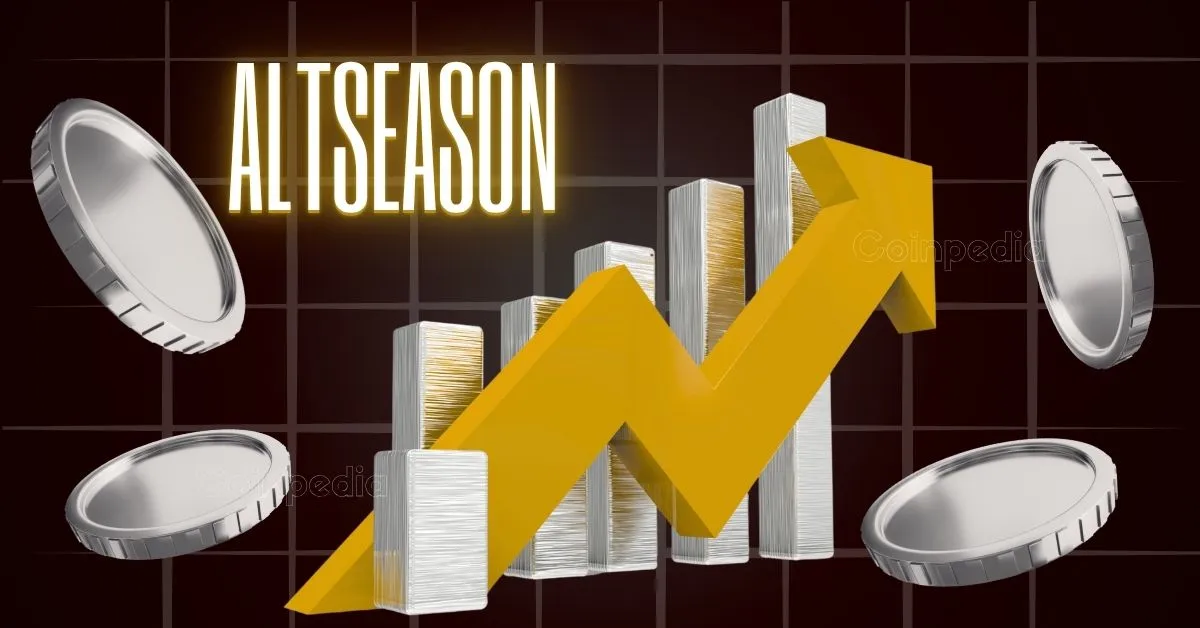
The cryptocurrency market is a dynamic and ever-evolving landscape, with various phases that capture the attention of investors and traders alike. One such phase is the “altcoin season,” a period characterized by the outperformance of altcoins (all cryptocurrencies other than Bitcoin) in terms of price gains and market momentum. Despite recent Bitcoin rallies and market optimism, a sustained and broad-based altcoin rally has not yet materialized in 2024–2025. This delay can be attributed to shifts in market structure, investor behavior, and macroeconomic influences that distinguish this cycle from previous ones.
Understanding Altcoin Season and Its Dynamics
Altcoin season traditionally follows a Bitcoin rally, where investors seek to capitalize on profits by rotating capital from Bitcoin into altcoins, which typically present higher volatility and potential returns. Historically, these periods have lasted a few months and have been marked by rapid appreciation across a wide range of altcoins. This phenomenon is often triggered by a decline in Bitcoin dominance, which refers to the percentage of the total cryptocurrency market cap held by Bitcoin. As Bitcoin’s dominance decreases, altcoin market caps tend to rise, signaling the onset of an altcoin season.
To track the progression of altcoin season, various indices and metrics are employed. One such tool is the Altcoin Season Index, which measures the relative performance of leading altcoins to Bitcoin over approximately 90 days. A threshold above 75 on this index is often cited as a signal that altseason is underway. This index, along with other data tools, provides valuable insights into the market’s sentiment and the likelihood of an impending altcoin rally.
The Current Market Landscape: Why Altcoin Season Isn’t Here Yet
Despite Bitcoin’s impressive performance, reaching new all-time highs near the $100,000 mark in recent months, several key factors explain why a clear altcoin season remains elusive.
1. Bitcoin Dominance Remains Elevated
Bitcoin continues to hold a substantial share of the total cryptocurrency market capitalization. Analysts note that Bitcoin dominance typically needs to fall below 50% for altcoins to gain significant ground. However, in recent months, Bitcoin dominance has remained relatively high, indicating that capital rotation into altcoins has not developed into a widespread trend. This elevated Bitcoin dominance suggests that investors are still favoring the leading cryptocurrency over its altcoin counterparts.
2. Altcoin Market Performance Is Mixed and Uneven
While a handful of altcoins have posted strong gains, the broader altcoin market has underperformed relative to Bitcoin. Key projects like Ethereum have struggled to initiate meaningful rallies, and many smaller altcoins have failed to reach the large market caps that characterize true altcoin seasons. This uneven momentum dampens overall investor enthusiasm for altcoins as a group, as investors may be hesitant to allocate capital to a market that lacks broad-based strength.
3. Changes in Investor Profile and Trading Behavior
Earlier altcoin seasons were heavily fueled by retail investor participation, often driven by social media hype and broader market euphoria. However, the current market landscape is dominated by more sophisticated, “Twitter-native” traders who focus on tactical, player-vs-player (PvP) competition rather than broad mainstream adoption. This shift in investor profile has altered capital flow dynamics, with less impulsive mass retail entry into altcoins. As a result, the market may require different triggers to initiate a sustained altcoin rally.
4. Increased Institutional Interest in Bitcoin
The current cycle features a growing institutional footprint in Bitcoin markets, with significant inflows of institutional capital solidifying Bitcoin’s dominance. Institutional traders tend to prefer Bitcoin’s liquidity, regulatory clarity, and perceived stability, which slows the flow of capital into more speculative altcoins and projects. This institutional preference for Bitcoin further contributes to the delay in the onset of altcoin season.
5. Macro and Regulatory Environment
Unlike some previous cycles, the broader macroeconomic and regulatory environment remains uncertain. Monetary tightening, inflation concerns, and regulatory scrutiny shape cautious investor attitudes, encouraging prudence over high-risk bets on altcoins. This cautious sentiment is reflected in the subdued performance of the broader altcoin market, as investors remain wary of the potential risks associated with these assets.
Market Indicators and Metrics Reflecting Altcoin Season Status
Data tools such as the Altcoin Season Index, CoinMarketCap’s Altcoin Season Index page, and various other crypto analytics platforms consistently reflect subdued altcoin momentum relative to Bitcoin. Values on these indices hover below levels typically signaling full altseason onset, indicating that the market has not yet reached the conditions necessary for a broad-based altcoin rally.
Expert analysts like Michaël van de Poppe, and reports from 10x Research and others, emphasize that while certain altcoins have shown pockets of strength, key altseason hallmarks—widespread market cap acceleration, retail investor-driven narratives, and broad altcoin leadership—are not present. These insights highlight the need for a more comprehensive alignment of market conditions to trigger a sustained altcoin season.
Potential Triggers for a Future Altcoin Season
Although full altcoin season has not arrived yet, the market exhibits some intriguing sparks that could light the fuse for a future rally.
– Bitcoin dominance may gradually decline as new narratives and sectors attract investor interest, including AI-driven tokens, decentralized finance (DeFi), and layer-1 blockchains like Solana gaining renewed attention. A decline in Bitcoin dominance could signal the beginning of capital rotation into altcoins, setting the stage for an altcoin season.
– Retail participation might stage a comeback if pricing and narratives align, especially with meme coins or novel utility-focused projects. Retail investors have historically played a significant role in driving altcoin rallies, and their renewed interest could contribute to the onset of altseason.
– Institutional interest could broaden to select altcoins, especially those with strong technology and adoption prospects. As institutional investors become more comfortable with the altcoin market, they may allocate capital to projects with promising fundamentals, potentially triggering a broader altcoin rally.
– Market cycles and historical fractals remind traders that altcoin seasons typically follow Bitcoin rallies, so patience might be rewarded as Bitcoin consolidates or pulls back, releasing capital into altcoins. Historical patterns suggest that altcoin seasons often occur after Bitcoin has reached new highs and begins to consolidate, providing an opportunity for capital to flow into altcoins.
How This Cycle Differs From Previous Altcoin Seasons
Key differences distinguish this altcoin cycle from those in 2017 or 2021, highlighting the evolving nature of the cryptocurrency market.
– Market maturity: The crypto market is now larger, more institutional, and less reliant on viral retail trends. This maturity has led to a more stable and sophisticated market environment, with less volatility and more strategic investment decisions.
– Shift in capital flows: Capital is more slowly and strategically allocated; rapid speculative rotations are rarer. Investors are now more discerning in their choices, focusing on projects with strong fundamentals and long-term potential rather than chasing short-term hype.
– Narrative diversity: Altcoin gains may be driven by projects solving real problems rather than hype alone. The market has shifted towards valuing projects based on their utility and technological advancements, rather than speculative narratives.
– Regulatory impact: Greater regulatory oversight tempers frenzy and influences institutional comfort. As regulatory frameworks become more defined, institutional investors are more likely to participate in the market, contributing to its growth and stability.
These factors suggest that while altcoin season remains a likely future phase, it may manifest differently and possibly more slowly than in prior cycles. The market’s evolution towards maturity and sophistication is reshaping the dynamics of altcoin seasons, requiring a more nuanced approach to identifying and capitalizing on these opportunities.
Conclusion: The Altcoin Season Wait Continues—but Opportunity Brews
The long-awaited altcoin season of 2024–2025 has yet to announce itself with conviction. Bitcoin maintains market dominance, retail enthusiasm remains cautious, and altcoin gains are selective rather than broad. Structural shifts, evolving investor behavior, and external economic factors contribute to this delay.
Yet, the fundamental drivers for altcoin season—a Bitcoin rally that pumps liquidity into altcoins, new promising narratives, and rising retail interest—still linger. Market analysts and data indices suggest that altseason is approaching but requires an alignment of capital flows, investor sentiment, and market conditions to ignite fully.
For investors and traders, the current environment calls for measured optimism, careful selection of altcoins with strong fundamentals or thematic relevance, and readiness to act when the market pivots. Rather than forcing a chase after hype, recognizing that this altcoin season might be “different this time” in its pace and character is essential.
Ultimately, the altcoin season’s arrival will mark not only a period of opportunity but also the continued evolution of cryptocurrency markets into a more sophisticated, nuanced landscape. Staying informed, adaptive, and patient will be crucial strategies as the crypto ecosystem awaits this pivotal market phase.





